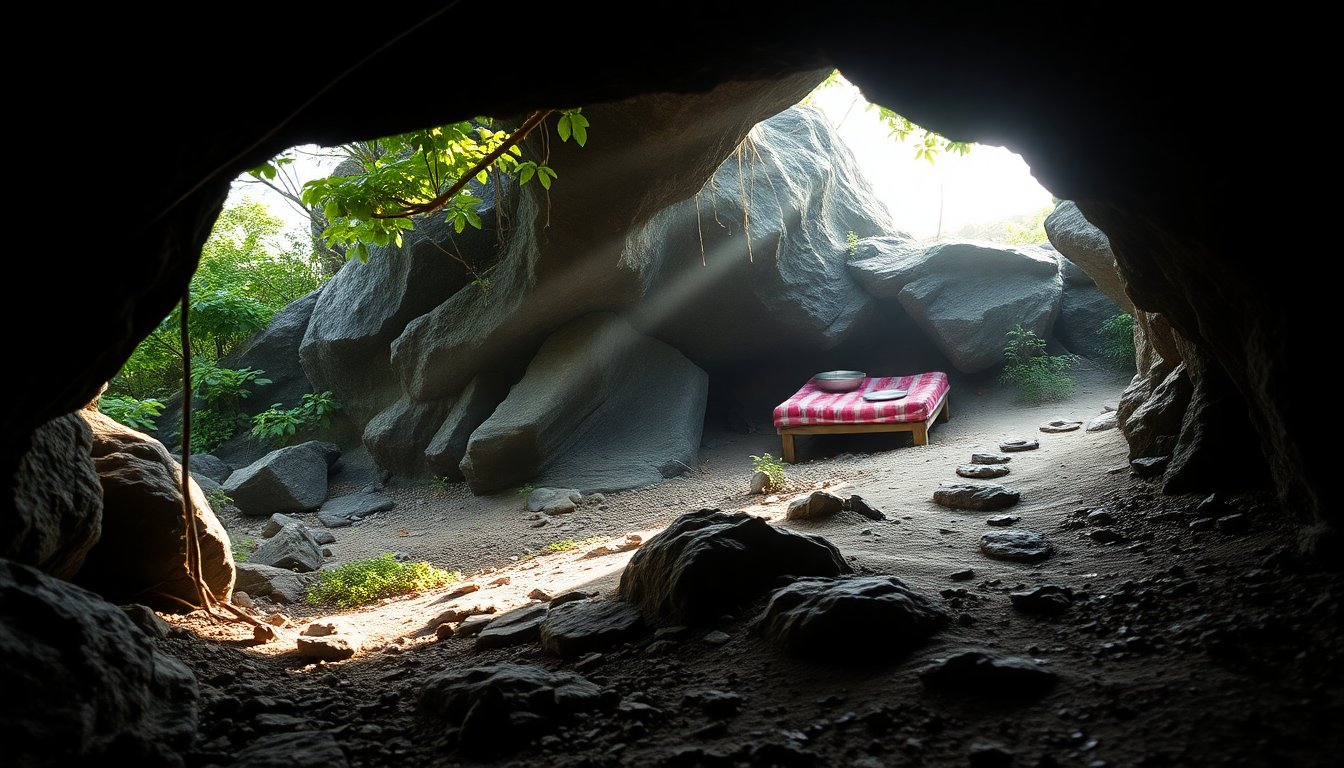Table of Contents
In a story that garnered international media attention, a Russian mother, Nina Kutina, and her two young daughters were discovered by Indian authorities living in a cave near the popular tourist destination of Goa. This unusual situation sparked discussions about the family’s unconventional lifestyle and their struggles with immigration laws, ultimately leading to their deportation back to Russia.
The sequence of events began in early July when police on a routine patrol stumbled upon Kutina and her daughters, aged five and six, residing in a cave nestled in the Indian jungle. Their visas had expired, resulting in the family’s transport to a migrant detention center, where they spent over two months before returning to Russia.
Nina Kutina’s journey and motivations
Kutina’s backstory is as captivating as her current circumstances. Originally from Leningrad (now St. Petersburg), she pursued her education in the Siberian city of Krasnoyarsk for eight years. Her life has been marked by extensive travels across countries such as Ukraine, Thailand, and Nepal, before settling in India.
Although she trained as a teacher, her career path led her to become an interior designer in Moscow. However, her longing for a life beyond the confines of a concrete city drove her to seek a more fulfilling existence by the coast, allowing her children to experience nature and adventure. “I wanted my kids to run barefoot on the sand and explore the world around them,” she explained.
Adopting an unconventional lifestyle
Throughout her life, Kutina has prioritized her children’s well-being and education. With her eldest son, Dmitry, she began this journey 15 years ago and subsequently had three more children: Luchezar, Ama, and Prema. She emphasized a close-knit family dynamic, stating, “I am with my children all the time, teaching them from my background in education and art while nurturing their creativity as a musician.”
During her time in the cave, Kutina shared her experiences on her Telegram channel, aptly named Cave Life, where she offered paid knitting lessons and discussed her passion for art, even conducting classes while at the migrant detention center.
Life in the cave: a blend of nature and resilience
Her friend, Vasily Kondrashov, described Kutina as “legendary,” recalling his visits to her home in the northern region of Goa, where she ingeniously transformed her surroundings into a comfortable living space. Utilizing the natural features around her, she crafted two small rooms beneath the expansive roots of a tropical tree, complete with a fabric covering. A nearby river provided a serene setting, turning into a natural pool for her family.
Kutina’s search for a close connection with the earth brought her to a cave near Gokarna, a town known for its picturesque beaches and spiritual significance. The cave was conveniently located a short trek from the town, where she and her children would gather fruits and essentials.
A natural lifestyle and challenges faced
As a family committed to a vegetarian diet, Kutina remarked that they had never suffered from illness, attributing this to their lifestyle in harmony with nature. She constructed beds from wooden planks and embellished the cave with handmade decorations. Meanwhile, her son Luchezar stayed with friends in Goa to attend school.
Tragedy struck when Dmitry lost his life in a car accident in Goa. This devastating event greatly impacted Kutina, leading her to seek solace in the cave, which was situated near a temple, allowing her to grieve in peace with her daughters.
The aftermath of their discovery
The sequence of events began in early July when police on a routine patrol stumbled upon Kutina and her daughters, aged five and six, residing in a cave nestled in the Indian jungle. Their visas had expired, resulting in the family’s transport to a migrant detention center, where they spent over two months before returning to Russia.0
The sequence of events began in early July when police on a routine patrol stumbled upon Kutina and her daughters, aged five and six, residing in a cave nestled in the Indian jungle. Their visas had expired, resulting in the family’s transport to a migrant detention center, where they spent over two months before returning to Russia.1
The sequence of events began in early July when police on a routine patrol stumbled upon Kutina and her daughters, aged five and six, residing in a cave nestled in the Indian jungle. Their visas had expired, resulting in the family’s transport to a migrant detention center, where they spent over two months before returning to Russia.2
A new beginning in Russia
The sequence of events began in early July when police on a routine patrol stumbled upon Kutina and her daughters, aged five and six, residing in a cave nestled in the Indian jungle. Their visas had expired, resulting in the family’s transport to a migrant detention center, where they spent over two months before returning to Russia.3
The sequence of events began in early July when police on a routine patrol stumbled upon Kutina and her daughters, aged five and six, residing in a cave nestled in the Indian jungle. Their visas had expired, resulting in the family’s transport to a migrant detention center, where they spent over two months before returning to Russia.4


